Get More Done in 12 Weeks Than Others Do in 12 Months
What is in The 12 Week Year book summary
The 12 week year book summary will help you to set and achieve your goals, because instead of planning for a whole year, you break it down into shorter 12-week cycles. This approach helps you stay more focused, work with urgency, and be accountable for your progress. You set specific and measurable goals, make plans to achieve them, and regularly check how you’re doing. It’s about taking action and adapting quickly to improve your performance and get better results.
In the context of the “12 Week Year” book, intentionality refers to the conscious and deliberate approach of directing your actions and decisions toward achieving specific goals. It emphasizes being purposeful and focused in your daily activities, ensuring that each task and effort aligns with your broader vision and objectives. 12-week Year summary helps you to redefine your year in a new manner. The 12-week Year Book Summary is the guiding principle for you to achieve your goals 4 times higher than usual.
3 Key principles and 5 Disciplines for lives
- To implement the 12-week year plan, we need to set the foundation and then implement the 12-week plan.
- Setting the foundation is critical before we implement the 12-week year plan.
- There are 8 success ingredients – 3 principles and 5 disciplines- fundamental to success in any area.
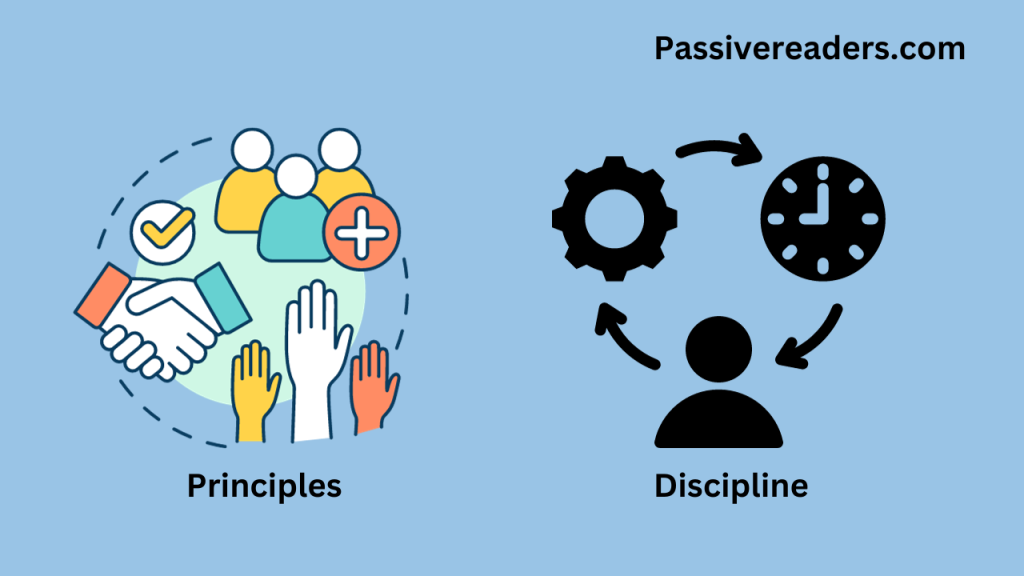
3 core principles of the 12 week year
Accountability
Before we embark on the 12-week year, we need to remember that we have to be accountable for our actions if we really want to bring change in our lives. Accountability is the powerful commitment to taking full ownership of our actions and results, regardless of the challenges or circumstances we face. It involves a profound willingness to seize control of our lives, to navigate through uncertainties, and to forge new paths. When we embrace accountability, we transcend limitations, finding the courage to shape our destiny and make a meaningful impact. It is the cornerstone of personal empowerment, fostering a proactive mindset that propels us toward positive change and lasting success.
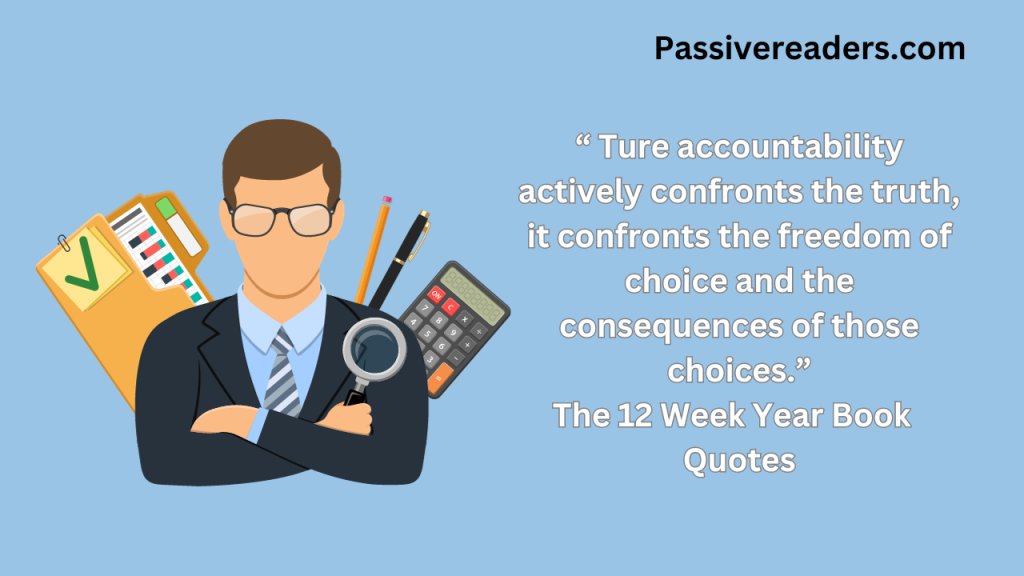
Commitments
Commitment means changing your mindset from “If” to “How.” It involves having a robust and emotional desire for the results you want. You identify key actions that will lead to those results. It’s essential to know the costs involved, whether time, energy, money, risks, or discomfort. Commitment is about acting based on your commitments, not just following your feelings. It’s a powerful force that keeps you focused on your goals and helps you overcome challenges on your journey to success.
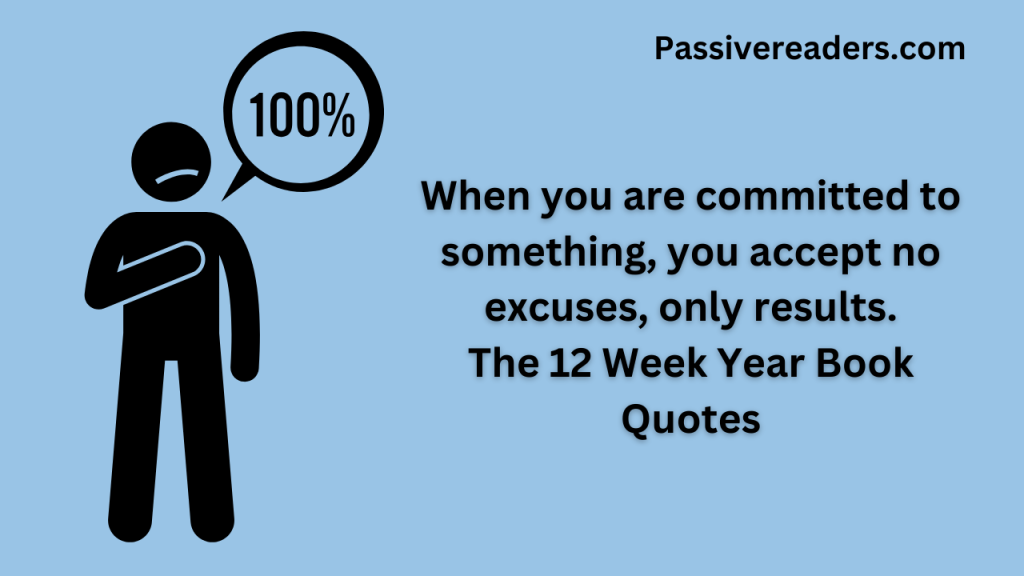
Greatness in the moment
Achieving greatness at the moment involves making the most of every moment by being fully present mentally, physically, and emotionally. It’s about accumulating countless decisions and actions when someone consistently does what is necessary, even when faced with challenges or difficulties. This continuous commitment to fully engage and give your best in each moment contributes to the overall journey toward greatness. It’s a mindset of embracing the present, making positive choices, and recognizing that greatness is often built through the small, meaningful actions undertaken every day.
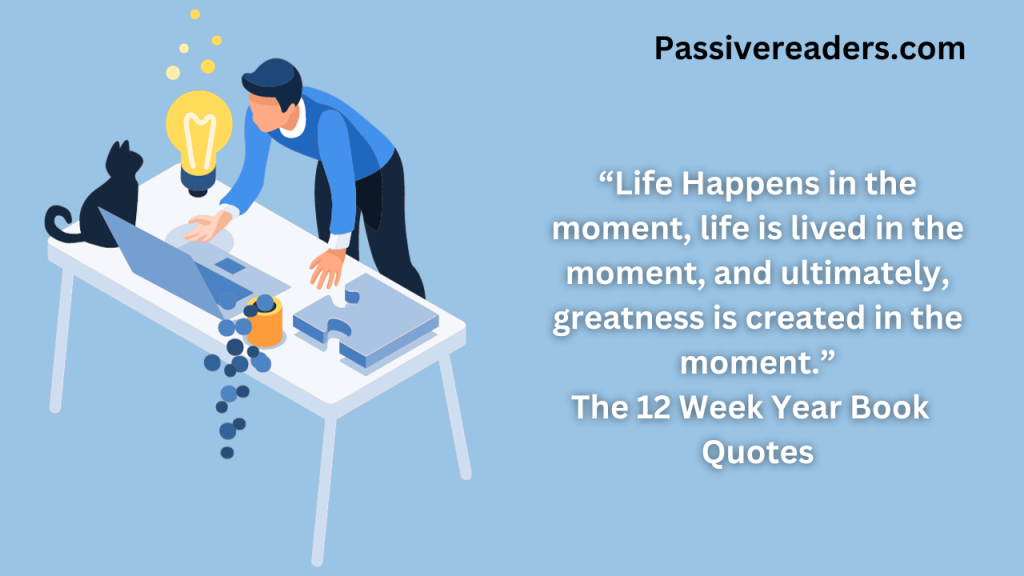
The 5 Key disciplines
Shape your thinking, actions and results
Have a vision that inspires you
Having a clear life vision is like having a big dream that inspires you. It’s about choosing what really matters over what’s just comfortable. Instead of spreading your time equally everywhere, it’s focusing on what makes you truly happy. This includes aligning your personal and work goals so that they support each other. So, having a meaningful vision is all about going after what’s important, finding balance that brings joy, and purposefully shaping your life the way you want it.
Planning
To turn your big dreams into reality, we need to break them into smaller parts—like priorities, goals, and specific actions. This way, you can take clear and achievable steps toward making your vision come true. Planning is like creating a roadmap for your dreams, guiding you on the journey to success one step at a time. It’s about making your ambitions more manageable and giving you a clear path to follow. So, when you plan, you’re essentially setting the stage for your dreams to become a tangible and achievable reality.
Process control
Process controls are tools and systems designed to align daily actions with top priorities. They serve as guides, keeping focus on essential goals and ensuring actions contribute to overall success.
Measurement
Measurements provide crucial feedback, offering insights into progress and effectiveness. They illuminate where you stand, what’s working well, and areas needing improvement. This information empowers informed decision-making, guiding adjustments for better outcomes.
Time use
How you spend your time directly shapes your outcomes. Consistently achieving your goals relies on purposeful time utilization. To predictably attain your objectives, it’s essential to approach time with intentionality, ensuring each moment contributes meaningfully to your aspirations.
Implementing the 12-week year
The 3 principles and 5 disciplines can be combined into an operating system for implementing the 12-week year.
- Crystalize a compelling vision
- Develop your 12-week plan
- Set up processes and controls
- Keep score and continuous improvement
- Regain control of your time
1. Crystalize a Compelling Vision
your action will never exceed the size of your vision.
- Be willing to push yourself beyond your comfort zone and take consistent action to achieve breakthroughs.
- Develop a clear, inspiring vision that aligns your personal and professional aspirations and is motivating enough that you will take action despite your discomfort.
The Emotional Cycle of Change
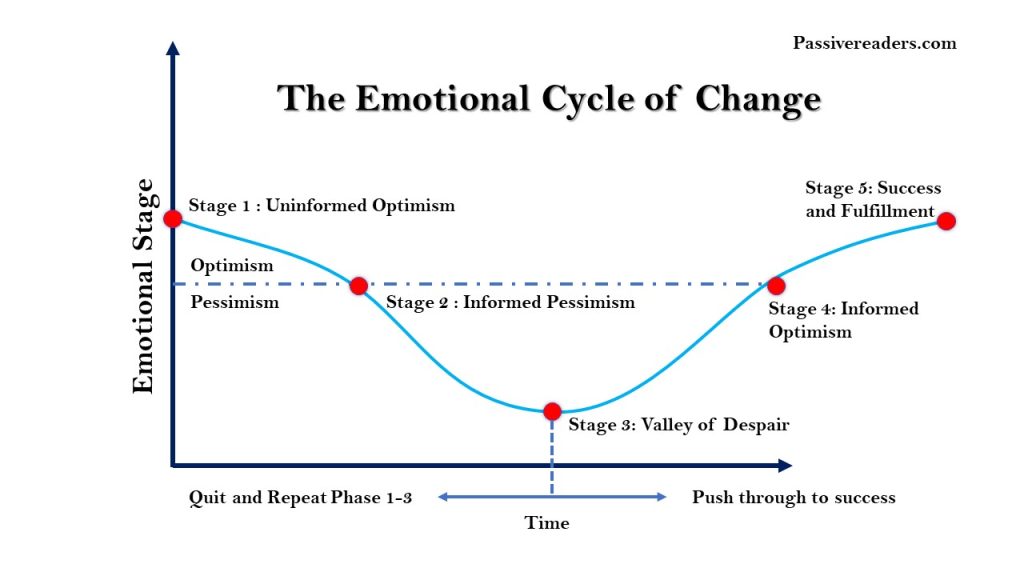
Changing something in your life can be like a rollercoaster of emotions. There are five stages, kind of like different feelings you go through. First, you’re super excited about the change, imagining all the good things. Then, as you learn more and face challenges, you might feel a bit unsure and less positive. The third stage can be tough; it’s when many people feel like giving up because change is hard. But you can push through if you have a strong vision and commitment. The fourth stage is more positive; you start seeing the benefits of your efforts. The last stage is when you’ve succeeded, and the change feels natural. Understanding these stages can help you handle tough times and successfully make changes.
Shift from impossible thinking to possible thinking
What would be different for you, your family, friends, team, clients, and community? By asking What if ? you give yourself permission to entertain the possibility and begin to connect with the benefits
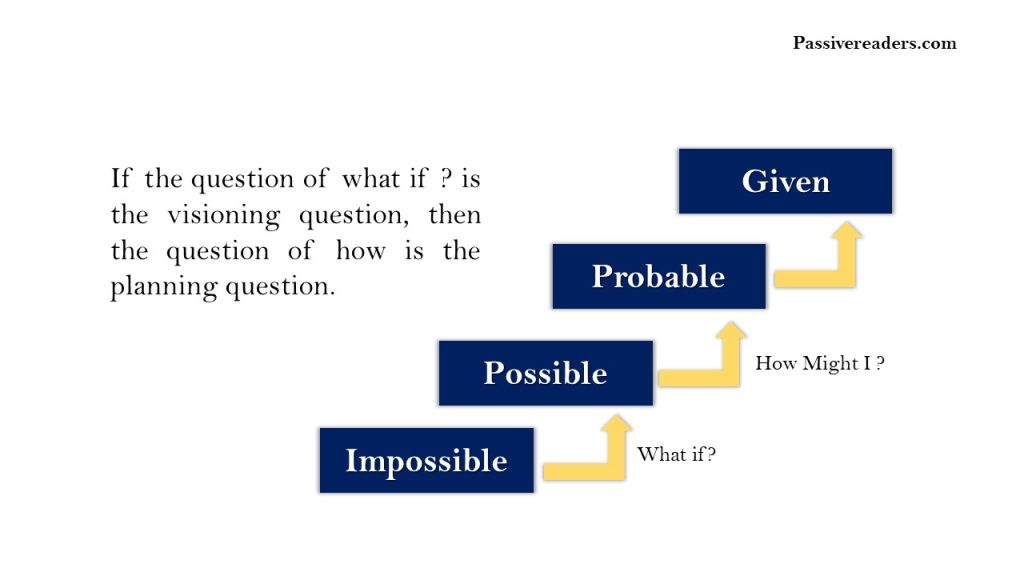
Crafting your vision
- Three-time horizons that you will want to focus your vision on
- Long-term aspirations
- Mid-term goals, about three years into the future
- 12 weeks plan
Define your vision
- Take a few minutes right now and think about everything you want to have, do, and be in your life.
- What is most important to you physically, spiritually, mentally, relationally, financially, professionally, and personally?
- How much time freedom do you want?
- What income do you desire?
- Write everything you can think of on paper; leave nothing off the page.
- Now, take the items from your page that you connect with emotionally and construct a vision for your life 5, 10, or 15 years into the future.
3 years vision
- What do you want to create in the next three years?
- Write down, in as much detail as possible, what a great personal and professional lie looks like for you
- Connect deeply on what is truly meaningful to you.
- Share your vision with others to increase your commitment level
- Keep your vision top of mind: print it out and review it regularly
2. Develop 12 week Plan
Planning is like using a map to reach a destination. Just as a map guides you, a plan helps you achieve your vision and avoids impulsive choices. It’s like thinking on paper. A good plan outlines what needs to be done and how to do it. Being proactive means figuring out the right tasks and scheduling time for them. In simple terms, planning guides you toward your goals, ensuring you stay on track.
Define 12 week goals
To turn your vision into a reality, it’s crucial to narrow it down to 1 to 3 key goals for the next 12 weeks. These goals should adhere to five essential criteria. First, they must be specific and measurable, such as losing a specific amount of weight or meeting a certain number of people. Second, they should be worded positively, emphasizing improvement rather than reduction. Third, the goals should be realistically challenging, pushing you to do something different but within reach. Fourth, each goal should have clear accountability, with one person taking responsibility. Finally, the goals need to be time-bound, with a specific date set for completion. This focused and structured approach enhances concentration urgency, and significantly boosts the likelihood of achieving your goals
Develop 12 week goals and tactics.
Once you’ve identified 1 to 3 key goals for the next 12 weeks, the next step is to develop tactics or daily action items to accomplish these goals. For each goal, create a list of the highest-impact activities that must be performed daily or weekly. Focusing on the most essential tactics to streamline your efforts is crucial. Describe each activity using a verb and assign a specific timeline to it. This targeted and intentional approach ensures that your daily actions align directly with your overarching goals, maximizing efficiency and increasing the likelihood of success. 12-week year planning guides you to plan well and integrate planning into your daily activity.
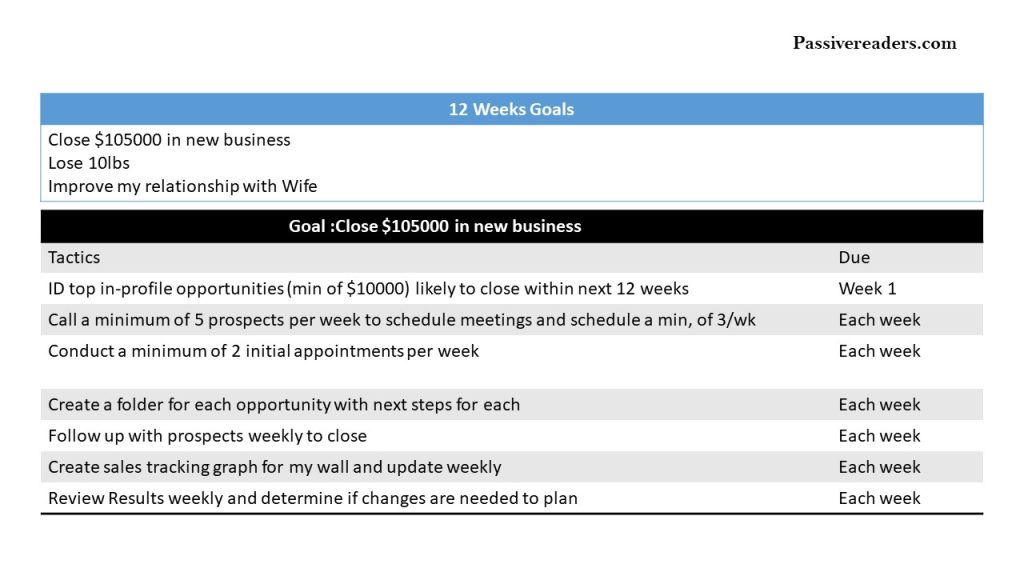
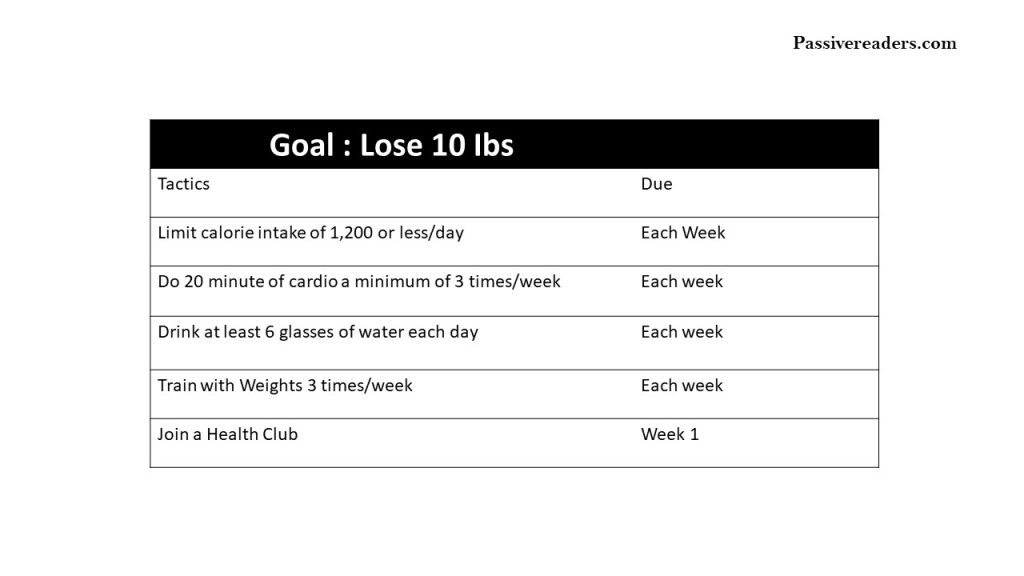
Before you put your plan down, ask yourself these questions: What actions will you struggle with?
……………………………………………………………………………………………
…………………………………………………………………………………………….
What will you do to overcome those struggles?
……………………………………………………………………………………………..
……………………………………………………………………………………………..
3. Set up processes and control
- We need to set up a process and control mechanism so that the system works automatically.
- Focusing on willpower alone does not help because studies have shown that willpower has a fatigue factor, and we have experienced that sometimes we have willpower and sometimes we don’t.
- Break down your 12-week plan into a weekly and daily plan where you identify the strategic activities aligned with 12-week goals.
- Print a copy and calendarize these activities
- Review these activities daily and ensure these items get completed each week, no matter what. Start WAM (Weekly Accountability meeting) with a group of two to four people. It is not about holding each other accountable but fostering individual accountability to execute your plan consistently.
- The purpose of these meetings is to receive feedback and suggestions from the group.
- To sum up, three activities are required: score your work, Plan your work, and participate in WAM (Weekly accountability Meeting)
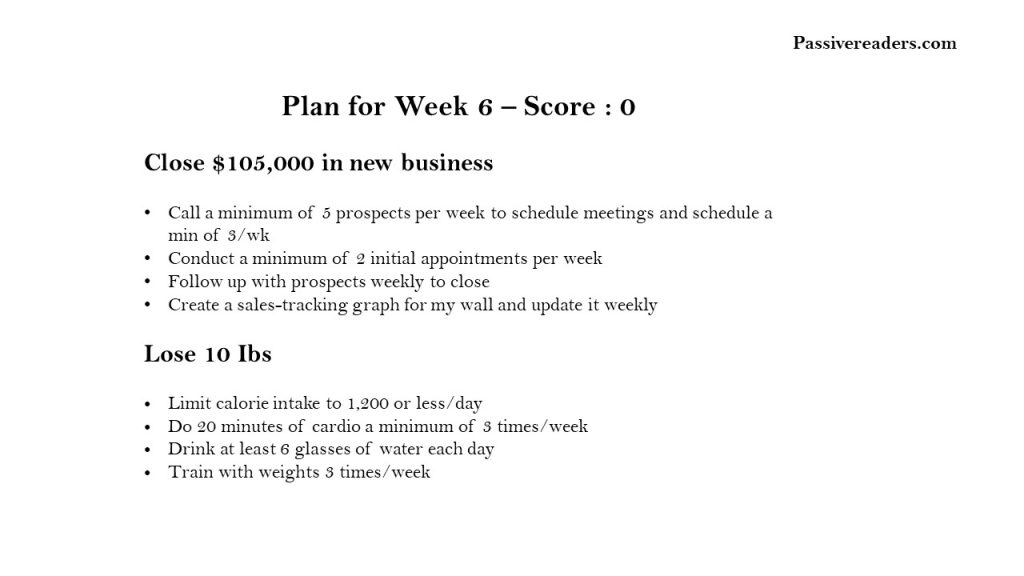
Do not Go it Alone.
- There is no such thing as a self-made man. You will reach your goals only with the help of others.
- The groups involved in peer support met regularly and discussed their progress, struggles, and challenges.
- Form a group of two to four committed individuals to meet weekly
- WAMs(Weekly Accountability Meetings) – it is not about trying to help each other accountable, but rather fostering individual accountability to execute your plan consistently.
- Each member gives a short report on his or her results to date
- The weekly execution score and his or her focus for the coming week
- Receives feedback and suggestions from the group.
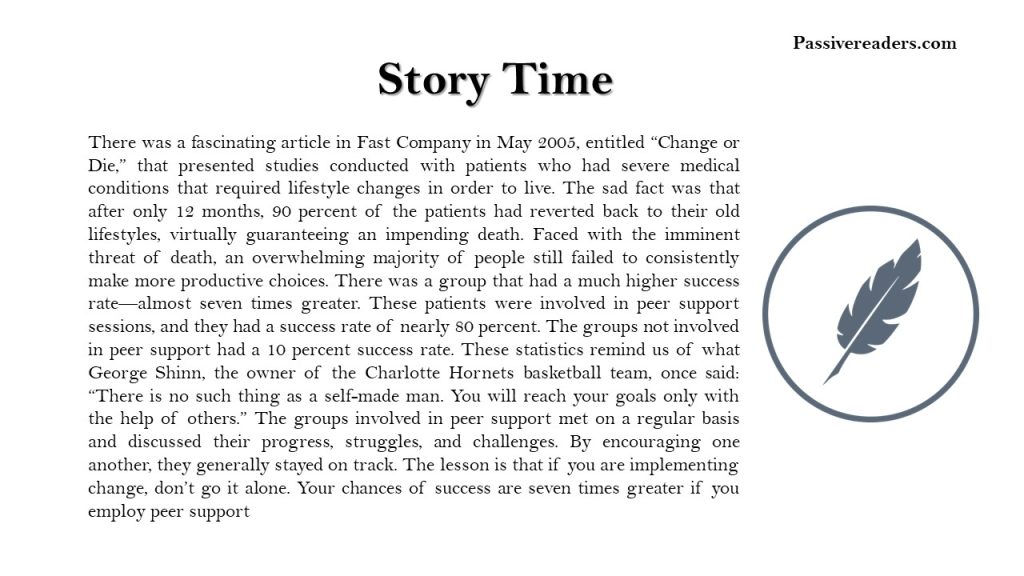
4. Keep Score and Continuous Improve
- You won’t know how well or poorly you are doing unless you keep score.
- Define and measure the lead and lag indicators for your 12-week goals.
- Lag Indicators are the results you want to achieve ( E.g., Close 105000 in new business, Lose 10 lbs)
- Lead indicators are the activities that deliver those results (e.g., call a minimum of 5 prospects per week to schedule meetings and schedule a minimum of 3 per week, Limit caloric intake to 1200 or less per day.)
- Use a weekly scoreboard to measure execution and assess the percentage of tactics completed in the previous week.
- You do not need a perfect score to succeed. An average of >= 85% will be enough to hit your 12-week goal. Focus on improving your scores progressively.
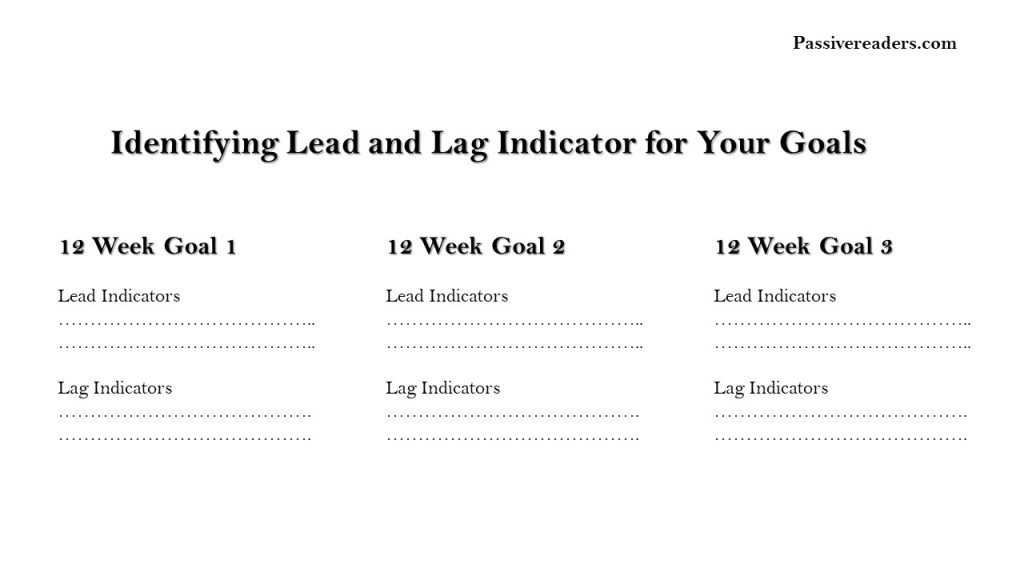
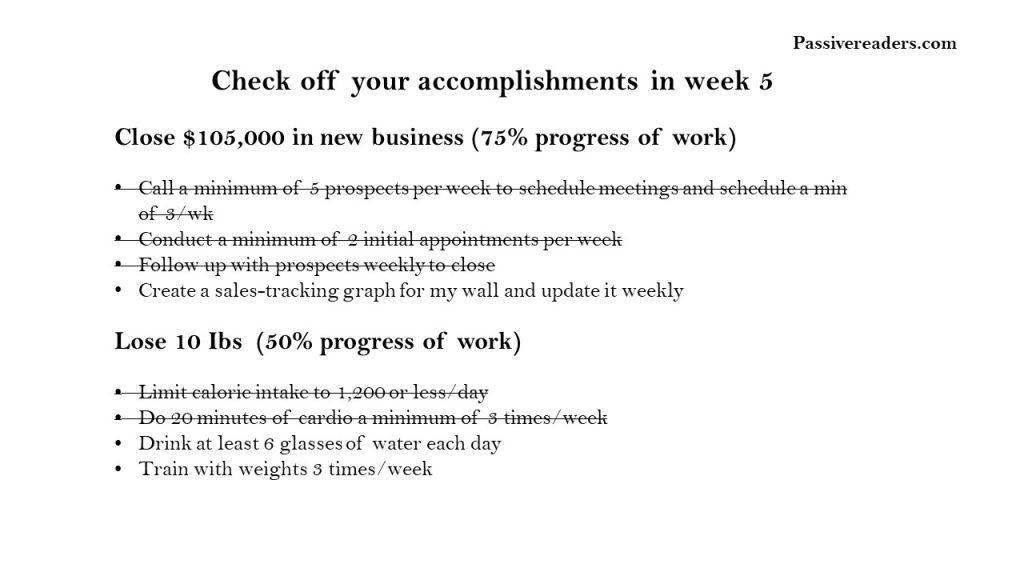
5. Take control of your time through a blocking strategy
This strategy is used to block your time based on the importance of work.
Pre-plan week: have separate time for key activities and tactics to achieve your goals.
Use the time blocking method to prevent time from being hijacked by unplanned activities so that you protect your performance time for most strategic and vital tasks.
Three time-blocking strategies
Strategic time block : 3 hours of uninterrupted time for most important task where you will focus on the most crucial task that is purely aligned with your 12 week goals. No messages, emails, or phone calls are allowed in this time.
Have buffer time block: this time is scheduled for unplanned activities such as emails and administrative task. This time can be blocked 2 hours a day, which can be from 11.00 am to 12.00 pm in the morning and end of the day, which is 4.00 pm to 5.00 pm
Breakout blocks: breakout blocks are for your own recharge activities. During this time, you will be relaxing and doing the activities that recharge you for the next activities. At the beginning of the 12-week year, you will schedule the breakout block once a month and once you establish your 12-week year rhythm, then increase the breakout blocks from once a month to once a week.
Schedule all additional important activities like client and prospect appointments, standing meetings, marketing and sales, planning, operational tasks, project work, and personal tasks based on your available time and importance.
Let’s develop the Ideal Workweek
- 1 * 15 min scoring and planning slot first thing on Monday
- 1 * 3-hour strategic block
- 1-2 buffer blocks from Mon-Fri, Ideally at the start/end of the day
- 1* breakout block for the month/week
- All other important activities e.g., key client meetings, regular team meetings, planning slots, and coaching sessions. Etc. 3-hour
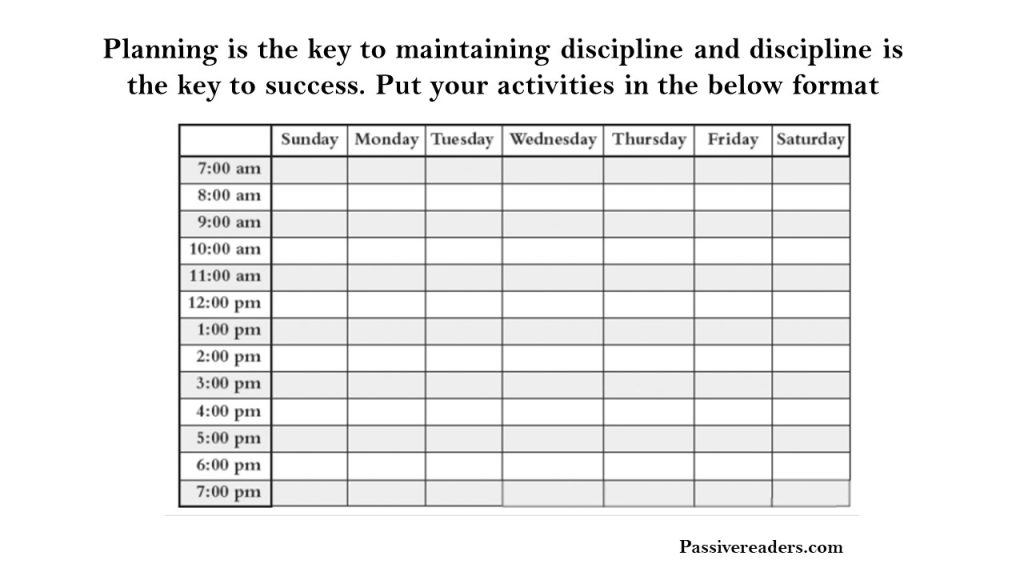
Ownership And Accountability Is The Key
- You will not be able to accomplish your 12-week plan unless you take full ownership and accountability of your life. Ownership means taking full responsibility of your life rather than blaming external circumstances or other people and also stop adopting a victim mindset and become blind to your choices and options.
- Take control of your life rather controlled by situation and need to change how you response to the events and how you think and act.
- Identify the areas of your life where you will take full responsibility and be willing to do things that are uncomfortable and new things you have not done before to get results you have never had before.
- Choose the right people around you are equally aligned and taking the tough path to get their 12 week year goals. Let’s determine our 12 week from today. It is a 12 week Year planner for your whole year.
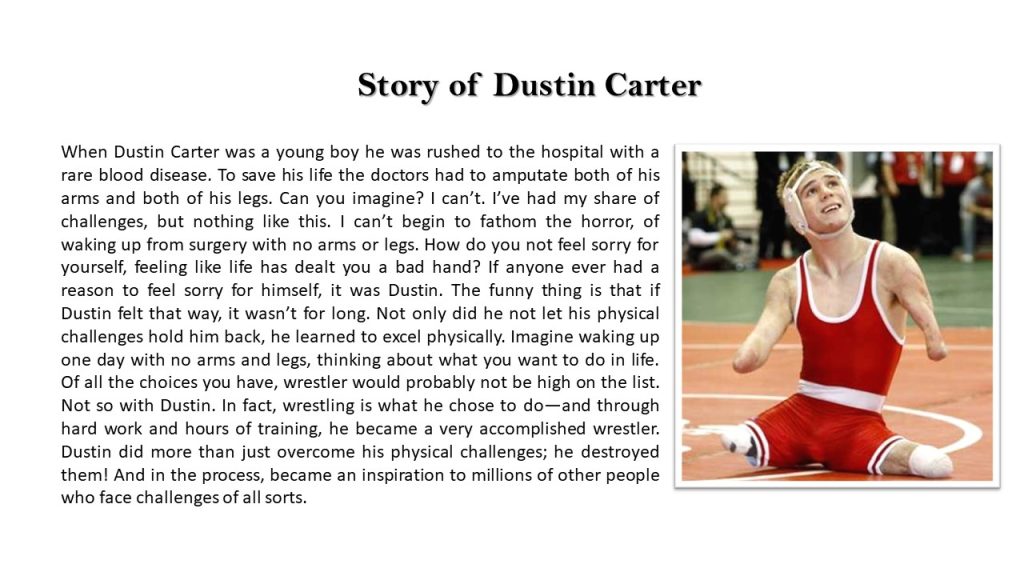
Commitments require for 12 week Year Plan
Four things work behind the firm commitments
Desire: strong desire is the key to achieving your 12-week year plan. We need to list the benefits we are getting after keeping this commitment to create a sense of urgency for the 12-week year goal.
Actions: Once we strongly desire to accomplish something, we must identify the core actions to produce our desired result. There are only one or two keystone actions that ultimately produce the result. We must identify these keystones and focus on them.
Count the costs: We need to remember that the commitment has a cost because we will do something to gain something. Cost can include time, money, risk, uncertainty, loss of comfort, etc. Identifying the cost before you will help you to consciously choose whether you are willing to pay the price of your commitment.
Act on commitments, not feelings: a rigorous focus on commitment rather than feeling is the key to achieving your 12-week year goal. Getting out of bed at 5.30 am to jog in the winter cold can be daunting, especially when you are in a toasty warm bed, but you are committed to your goal; no matter what, you will get the job done. If anybody asks how many weeks are in a year, your answer would be 12 weeks because we want to achieve our goals in 12 weeks. We are converting 52 weeks a year to 12 weeks. Brian Moran’s The 12 week Year is so practical that anyone can achieve their goal if they are committed to its cause.
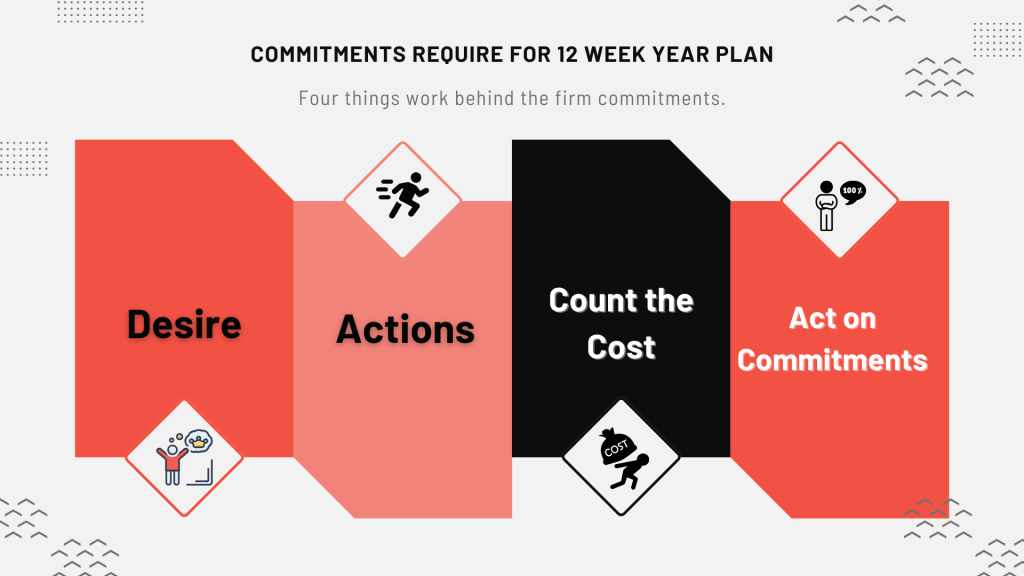
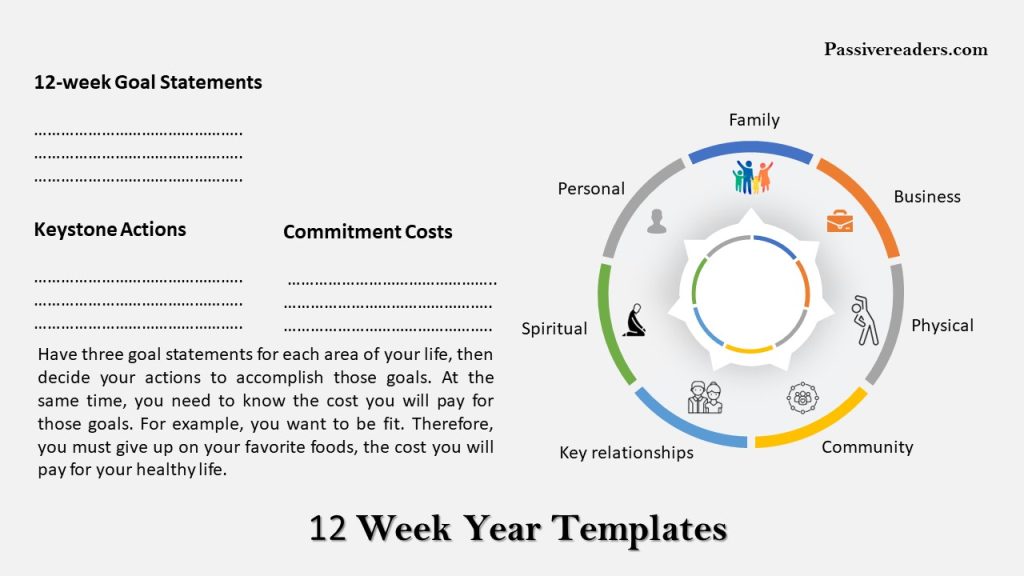
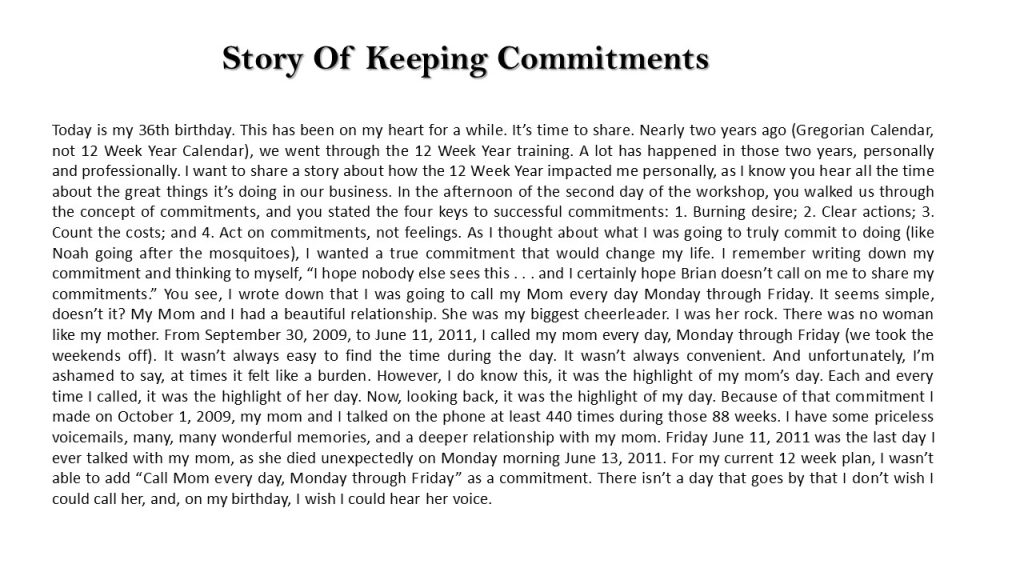
Your First 12 weeks
We need to remember a few things before implementing our 12-week-year plan. A 12-week year comes with a cost, which means you must let go of many things if you want to achieve great things in just 12 weeks instead of 12 months. Let’s look at some critical issues we need to remember before starting our first 12 weeks.
Resistance Monster
When we want to achieve great things in life, we get resistance, and we need to overcome this resistance through consistent effort. Being aware of these barriers is crucial for personal growth. When we begin our 12-week year plan, we need to remember that there will be obstacles we need to overcome by implementing 12-week year tools.
The need for immediate gratification
Everyone likes immediate gratification, which means we prioritize quick and easy comfort over long-term benefits unless there is a very valid reason for it. We develop a compelling vision in our 12-week year plan, which reminds us about our long-term vision. This goal connects our daily actions to our border vision. For example, a salesperson may not like meeting new clients, but when he remembers his vision, he becomes motivated and meets new clients. This salesman reads his vision every time before visiting his client. He reads his vision aloud, reminding himself why he was in this job. We need to remember our long-term vision and avoid immediate gratification.
Problem with Multiple goals (One goal at a time)
Having lots of goals can be tough. Research says planning for many goals might not work well. It’s like feeling overwhelmed when you have a big messy house with many things to clean. The 12 Week Year helps by making it like a road trip. You focus on one goal at a time, like driving one turn at a time. This method shows progress in 12 weeks and helps handle many goals. Setting short-term goals, tracking daily progress, and focusing on one thing each week makes it easier to get things done step by step.
Letting go of your old habits
Your current habits are shaping your current results. To achieve new results, like your 12-week goal, you need to change your habits. Charles Duhigg, in “The Power of Habit,” suggests a four-step approach, emphasizing the importance of a written action plan. The 12 Week Year’s weekly routine helps create a new environment with planned behaviors, making it easier to break old habits and achieve your goals.
Avoid Victim thinking
Sometimes, people feel powerless, blaming external circumstances for their challenges. True greatness comes when you realize that the key to change lies within you. You control your thoughts and actions, and personal accountability is crucial for greatness.
Read 7 Habits of Highly Effective People Book Summary
Rolling out your first 12-week
First 4 weeks
- In the first four weeks of the 12 Week Year, the emphasis is on establishing a solid weekly routine. This involves strategically planning your week using time blocks to allocate specific periods for essential tasks. Tracking your progress and holding Weekly Accountability Meetings (WAMs) play a pivotal role during this phase. Keeping score of your activities and discussing them in WAMs ensures that you stay on track, fostering a sense of responsibility and commitment to your goals. This structured approach helps build the foundation for consistent execution and progress throughout the 12-week period.
- We are working on achieving our yearly goals in 12 weeks which is why the week of the year is very important for us to act on it.
2nd Four Weeks
In the second four weeks, the focus shifts to assessing improvements in both Lead and Lag indicators. It involves a thorough examination of the progress made in these key performance indicators. Additionally, attention is given to identifying and addressing any gaps observed in the indicators. This step ensures a comprehensive understanding of the indicators’ status and allows for the implementation of corrective measures to eliminate shortcomings and enhance overall performance.
Last 4 weeks
- In the last four weeks of the 12 Week Year, your main focus is on making real progress toward your 12-week goals. This means putting in a lot of effort to carry out your plans and complete the tasks you’ve set each week. At the same time, it’s a good time to look back and think about how well your system worked throughout the process. Finding ways to make your system better helps you keep getting better results in the future. By combining a strong effort to reach your current goals with a smart look at how you’re doing things, you can increase your chances of success and keep making progress in the next 12-week cycles.
- We need to start our 12 week year from today to achieve great things in life. Next time you are asked how many weeks in 12 months, it has to be 12 weeks
